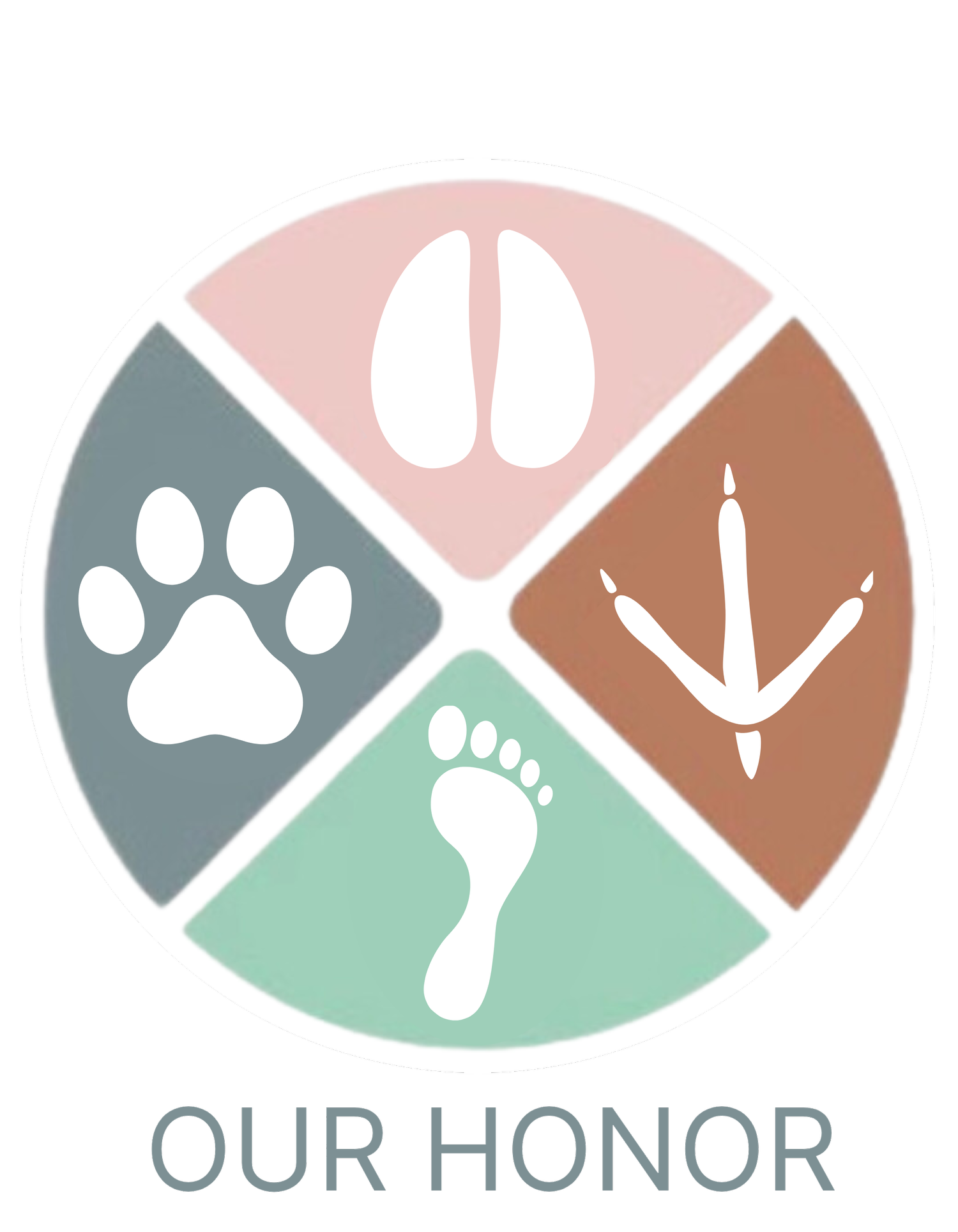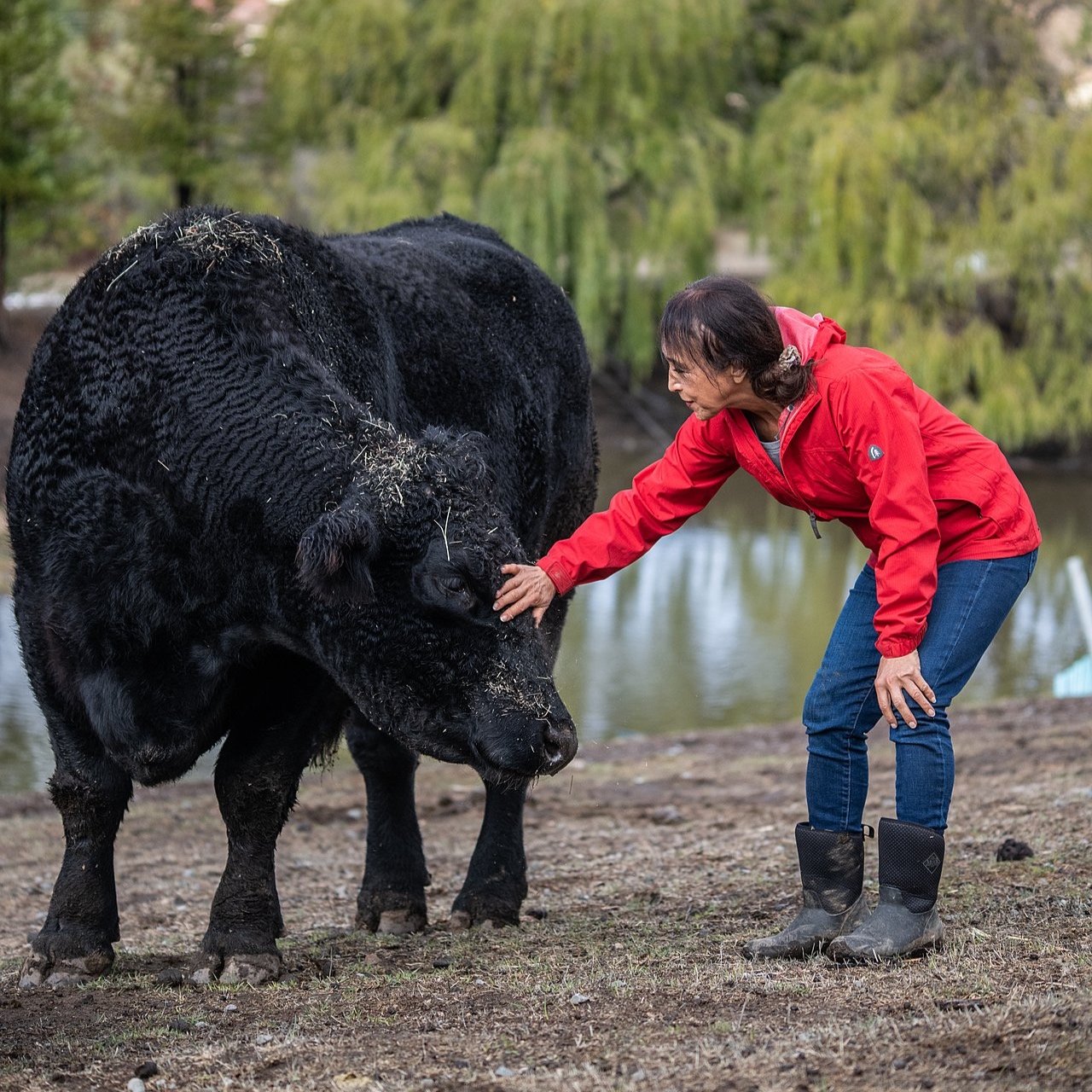Should government policy continue supporting increased meat consumption?
Miyoko Schinner, founder of Miyoko's Creamery, lovingly pats Louie, a resident rescued steer at her sanctuary, Rancho Compasión. Photo courtesy of We Animals Media.
Crystal Heath, DVM
Executive Director, Our Honor
Colin Woodall, the CEO of the National Cattlemen's Beef Association (NCBA), has been on a tear recently criticizing the Opportunities for Fairness in Farming Act in various media outlets. Woodall claims the act is driven by animal activists who “know if they make it harder for us to use the checkoff, then hopefully, that will impact demand.” He says, “The Beef Checkoff program is focused on driving beef demand for the benefit of all cattle producers, and for every $1 invested into the Checkoff, cattle producers see an average return of $11.91.” But, is increasing demand for meat really in the best interest of the American people?
Created under the 1985 Farm Bill, the Beef Checkoff requires farmers to pay into the program in order to fund the promotion of the beef industry. This year, the Checkoff will spend $38.5 million on its mission, but these funds are tiny compared to the massive sums of public funds Woodall’s NCBA has aided in successfully funneling to the industry. In 2020, the beef industry raked in nearly $9 billion in direct and indirect subsidies.
Meat industry checkoffs, along with other animal agriculture promoting programs, have proven to be wildly influential on consumer habits. In 1961, the average per capita consumption of meat was only 50.6 lbs per person per year globally. In 2020, that increased to 94.6 lbs, but in the United States, that number grew to 264 lbs per person per year.
To ensure ever-increasing consumption, Woodall’s group in 2023, earmarked a whopping $572,700 for the Masters of Beef Advocacy (MBA) program which trained more than 21,000 industry shills ready to leap into action to refute any criticisms of beef. The group birthed its own “Digital Command Center” and this military-esque operation is staffed 24-7 and scours the internet, responding to any negative chatter about the beef industry.
Veterinarians like myself have been on the receiving end of such campaigns. Criticisms from the medical field are extremely threatening to the industry, which tries its best to ensure dissident veterinary voices are not heard.
Conversely, nutrient and fiber-rich commodities have failed to capture their fair share of public funds. Plant-based commodities receive pennies on the dollar in comparison, with the humble lentil only receiving $1 to every $470 directed towards beef. It’s no wonder 95% of Americans consume a fiber-deficient diet.
Along with their outsized share of public funding, cattle also gobble up more than their fair share of our natural resources. The irrigation of feed accounts for 23% of all water usage nationally. Livestock feed–mostly alfalfa, grass hay, and corn silage for cattle, is currently sucking up 55% of the water consumed from the Colorado River Basin.
Only 1% of our protein comes from animals raised on pasture and rangeland, but the cost of that protein to wildlife habitats is exorbitant. Grazing facilitates the spread of highly flammable cheatgrass and red brome, which leads to devastating wildfires.
All cattle raised for food end up in the same place: the slaughterhouse. Those tasked with the killing suffer severe physical and psychological consequences from this work. Witnessing and participating in killing is listed in the DSM-V as “trauma” and slaughter workers suffer both present and post-traumatic stress disorder. These impacts can be devastating to their families and communities.
What would happen if the beef industry was no longer able to wield its checkoff-funded marketing machine? Would mujadara become as ubiquitous and affordable as the beef burger? It’s certainly not Colin Woodall’s job to wait around and find out.

